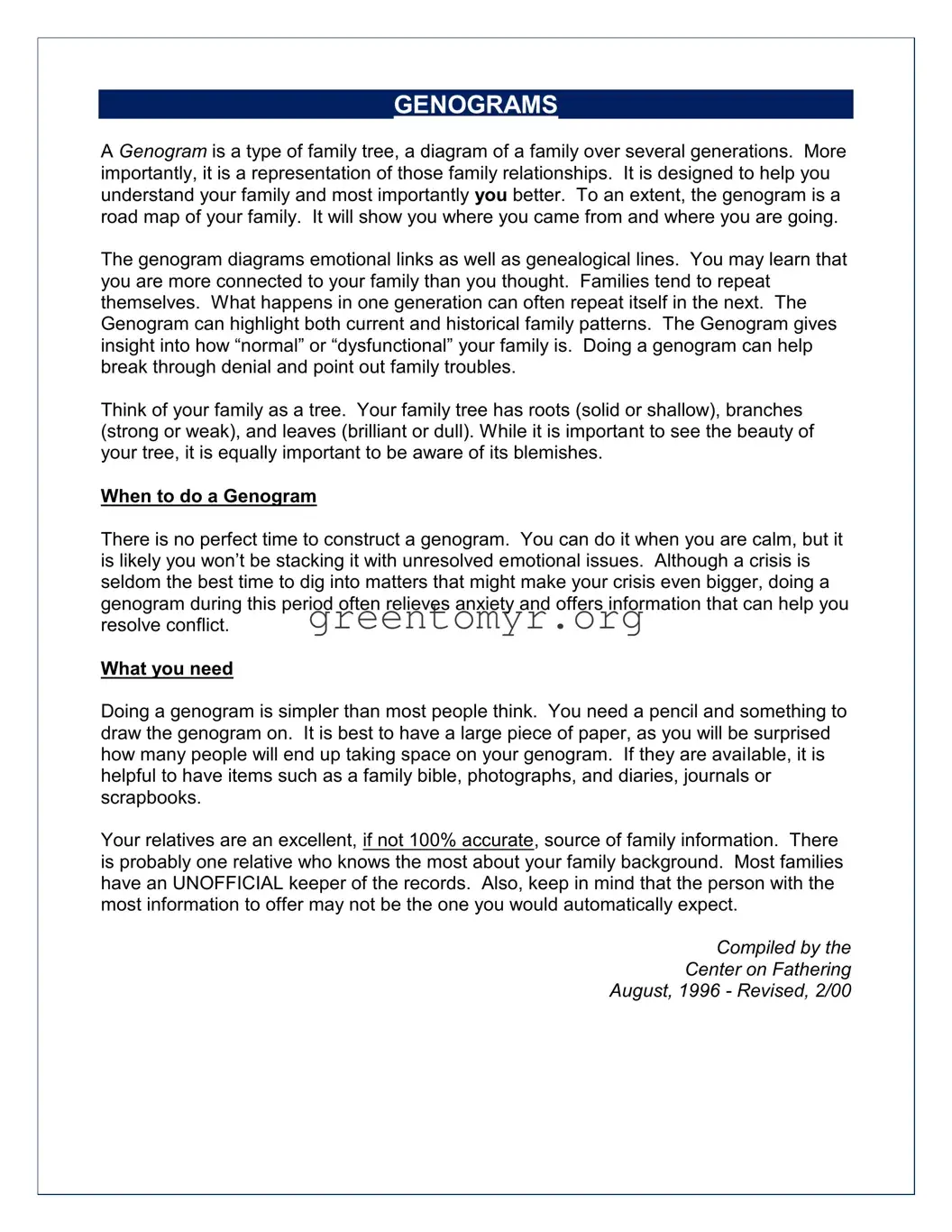When filling out a Family Genogram form, many individuals overlook some key aspects that can greatly enhance their understanding of their family dynamics. One common mistake is not including all relevant family members. Oftentimes, people only consider immediate family, neglecting to add aunts, uncles, cousins, and even close family friends who may have played significant roles in their upbringing. This omission can lead to an incomplete representation of the family tree.
Another frequent error is failing to indicate the nature of relationships. A genogram is not merely about who is related to whom; it is essential to illustrate the emotional connections as well. This can include labeling relationships as supportive, conflicted, distant, or estranged. Without this information, the genogram may not accurately reflect family dynamics.
People sometimes confuse the details when documenting historical relationships. Misjudging dates, such as births, deaths, and divorces, can distort the timeline of family events. It’s vital to double-check these details for accuracy. Likewise, assuming others' experiences or perspectives can lead to inaccuracies. Conversations with family members can often reveal more about the relationships than individuals initially realize.
Additionally, using vague descriptions can hinder the depth of understanding gained from the genogram. Instead of simply noting "close" or "distant," it’s better to describe specific qualities of relationships or events that have shaped family dynamics. This adds an invaluable texture to the genogram.
Many individuals rush through the process, leading to incomplete information. It’s beneficial to take the time needed to gather all relevant details and reflections. A rushed genogram can miss critical insights that help uncover underlying family patterns.
Involving others in the process may sometimes be overlooked. Collaborating with relatives can enhance the accuracy of the information recorded. Family members might have pieces of the puzzle that are essential to a complete picture. Without their input, the genogram may lack important layers of meaning.
Failure to utilize visual aids is another mistake. Genograms are diagrams, and representation matters. Ensuring a clear and organized layout enhances readability. Using symbols effectively to denote different types of relationships (like marriages, separations, or adoptions) will simplify interpretation.
People often neglect to reflect on emotional responses during this process. A genogram can evoke strong feelings, and it’s essential not to ignore these emotional insights. They can provide context to relationships, shedding light on patterns that may have been previously overlooked.
Furthermore, some individuals might shy away from addressing dysfunction within the family. Acknowledging challenges can be uncomfortable, yet recognizing these issues is a crucial step towards understanding family dynamics and breaking cycles.
Lastly, it is important to remember that a genogram is an evolving document. Many make the mistake of treating it as static after initial completion. Family dynamics change, and as such, keeping the genogram updated can help maintain its relevance over time.

